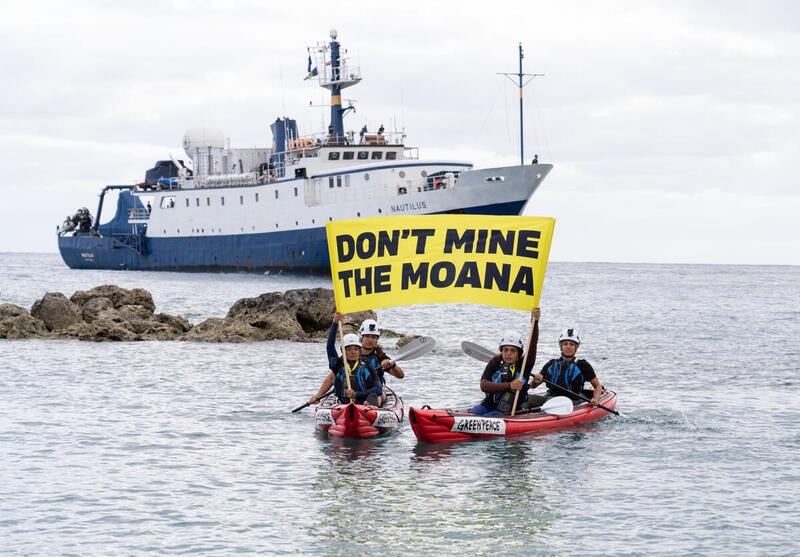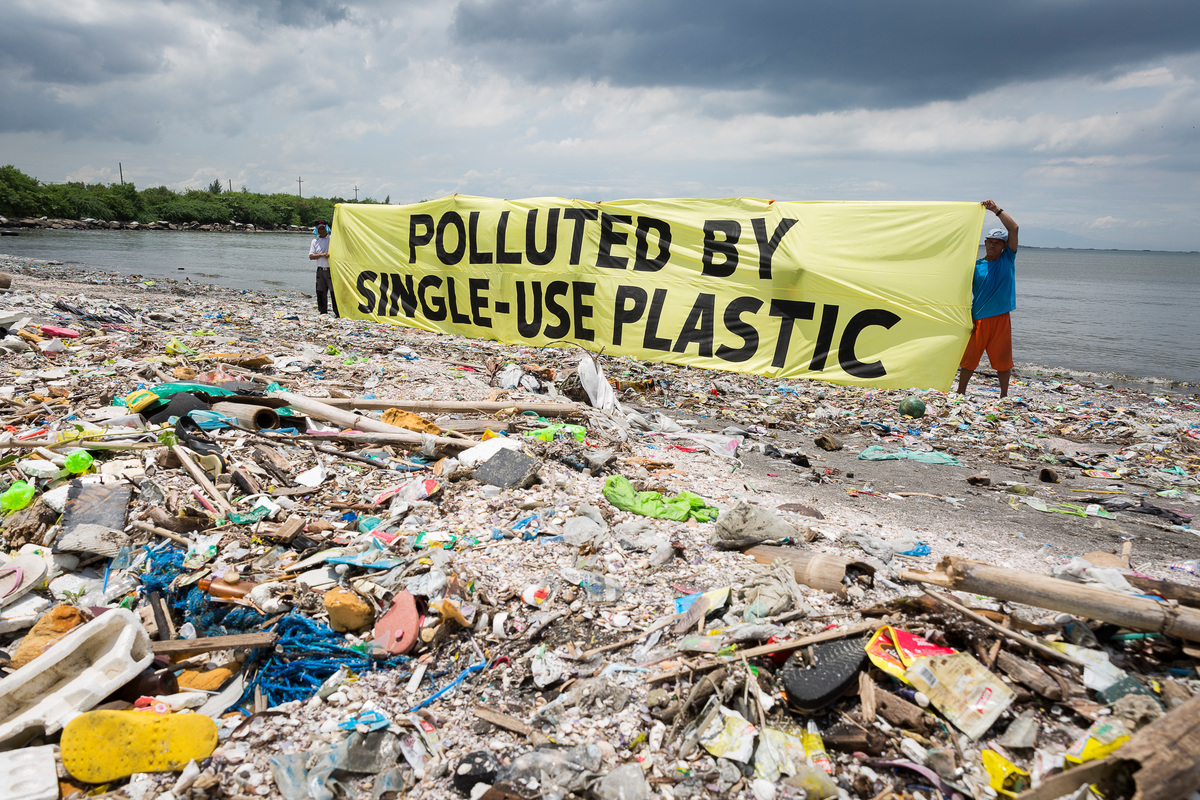Today we continue our transit, we exit New Zealand waters and reach the high seas mid morning. We’re headed to a seamount on the Challenger Plateau, ETA 11.30 – this will be the first seamount we attempt to survey.
The team on deck begin prepping the ROV and the DropCam first thing, before everyone meets on the bridge for a pre-dive briefing. Equipment is readied, and we start to deploy around 1pm, using the DropCam and four of the crew lowering it over the stern of the vessel.
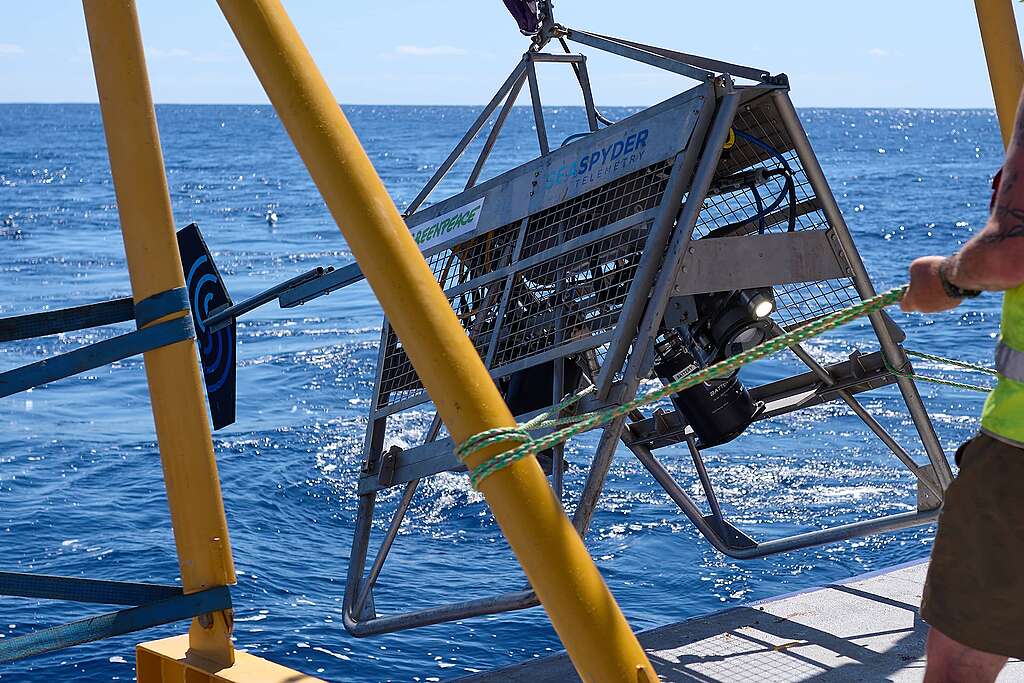
The seamount we’re looking at has never been studied before, and has been closed to trawling for several years. The whole team’s excited to see what we might find, and apprehensive about how well the equipment will perform.
The DropCam makes a fast descent to 300 metres to the top of the seamount, where we find lots of deep sea fish. We peak over the ledge, and then drop to 600 metres near the base.
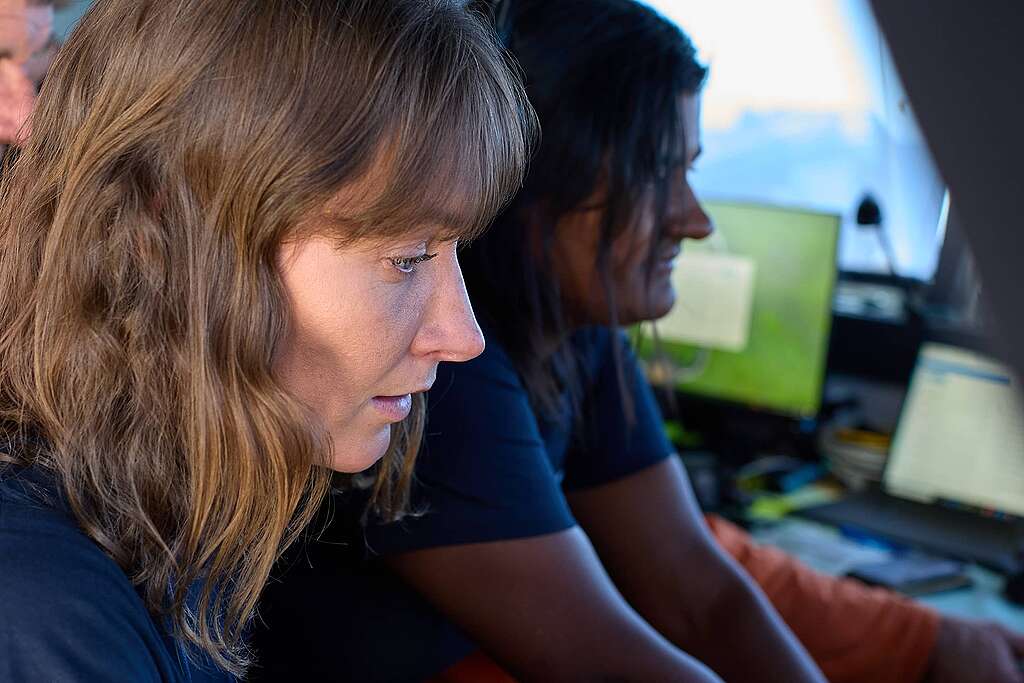 © Greenpeace Aotearoa
© Greenpeace AotearoaThis is the deepest we’ve been so far and it’s incredible to see the images coming through clearly of this hidden world. Most of the crew end up huddled around the monitor on the bridge in the afternoon to watch the action.
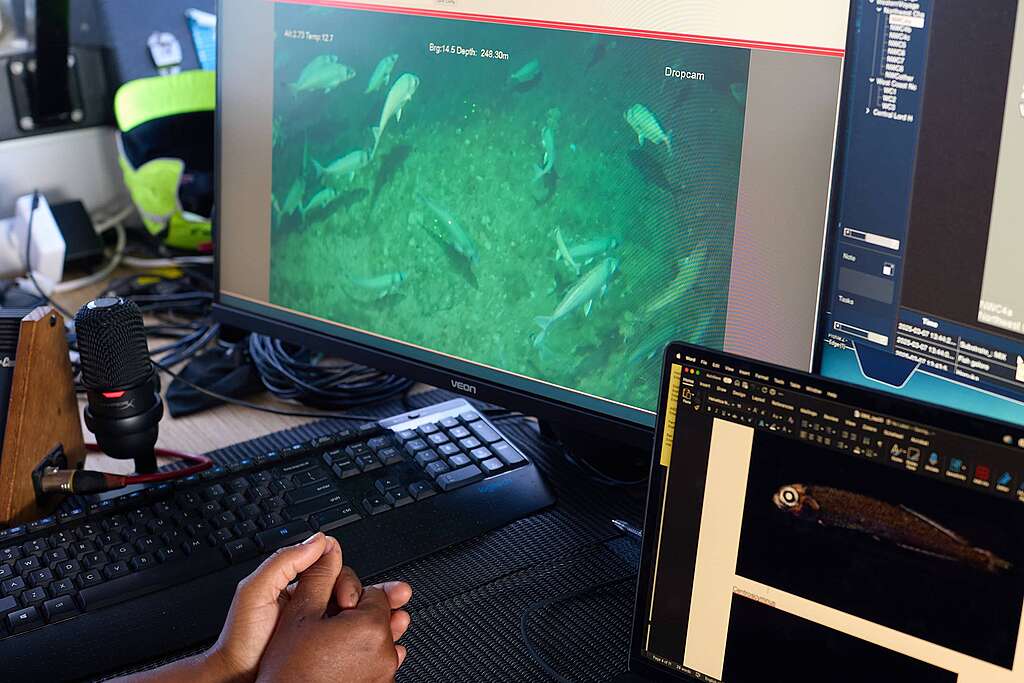
While our ship is bobbing around up on the surface of the Tasman, the DropCam is remarkably still down in the depths, giving the tech team a lot of confidence in sending it deeper in the coming days.
After a few hours, the camera is retrieved onboard and the crew starts securing everything for our departure. We debrief on the bridge and plan the next day’s survey, which is about an eight hour journey overnight, still in the Challenger Plateau area.
It’s a beautiful evening out in the middle of the Tasman, the sea is glassy, and we’re paid visits by more dolphins, albatross, petrels and shearwaters.
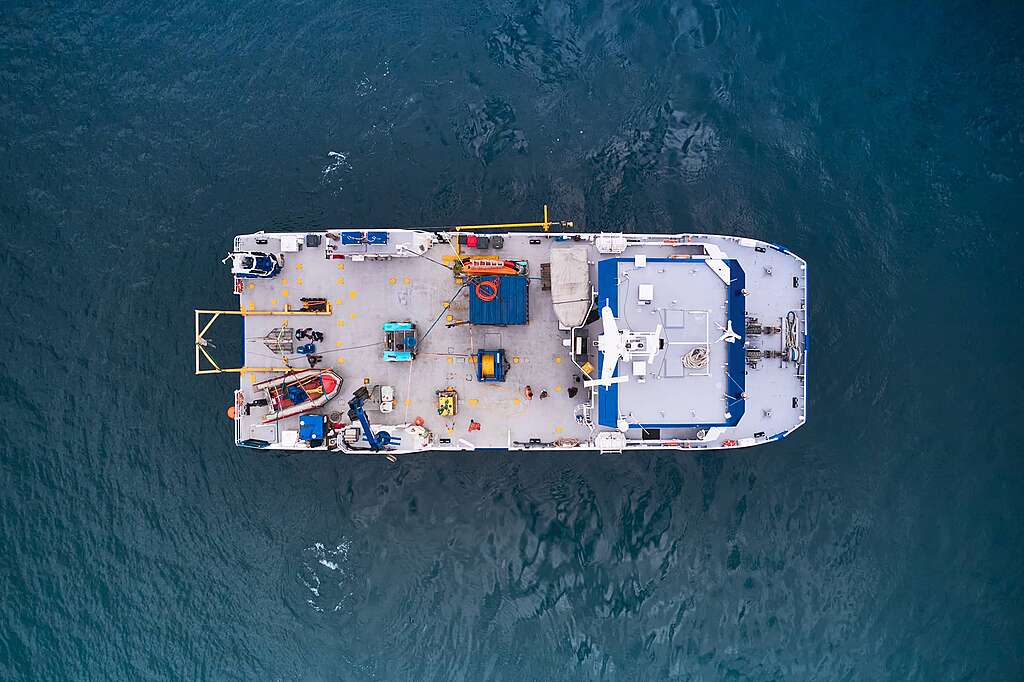
We embarked on an exciting journey to uncover the secrets of the deep. Find out more here and see what’s at stake!
Follow along


